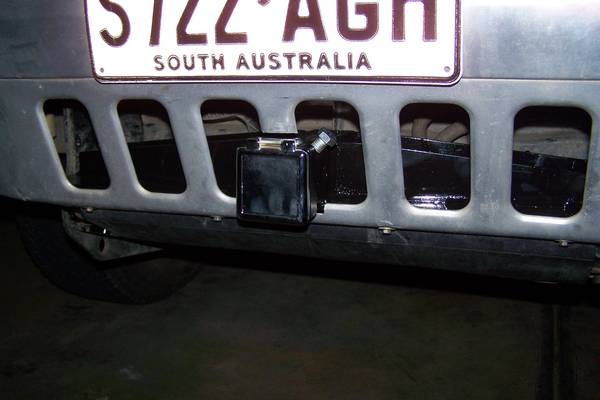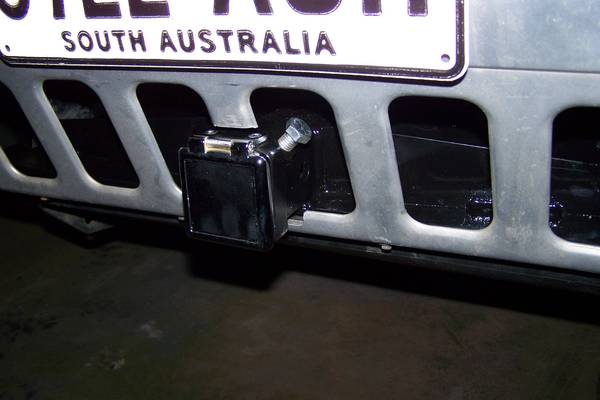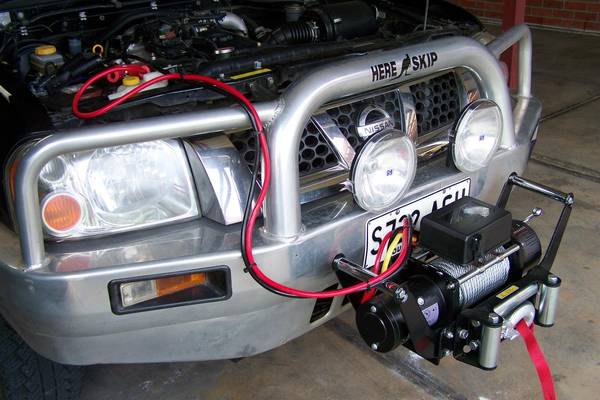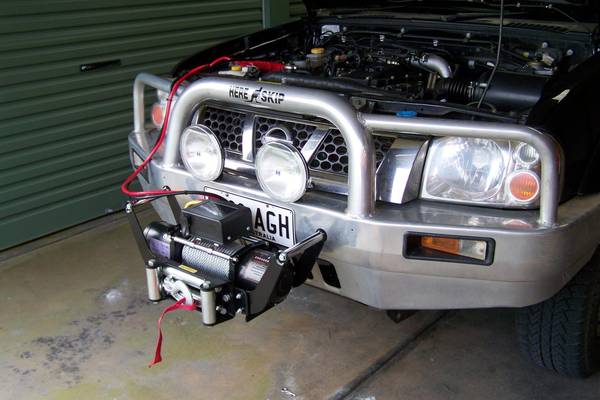That winch cradle should probably be a 2-person lift, if it's strong enough to actually handle the winch.
Back to the "weakest link" though - my towbar is rated at 3,000kg max. It means I am not allowed (and probably for good reason) to tow anything that weighs in excess of 3T.
Using the same thing on the front, I'd be looking at the same limit - 3T max pull from the front, but if I have my van (1.8T) hitched up and I'm pulling that and the Navara (2T) I've well and truly exceeded the capacity of the hitch.
That being said, the hitch is designed to handle 3T for a very long period of time. Transient (ie temporary) loadings may well exceed that by a significant amount so you could easily do this.
It's a rather neat idea. Wouldn't take a sideways load, so hopefully there won't be much slippage, but it looks pretty good.
Getting 400+ amps all the way down the back would be fun though, I'd imagine better than 2G cables would be needed for that distance!











